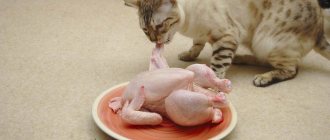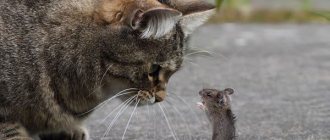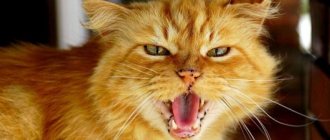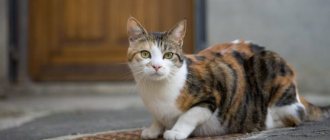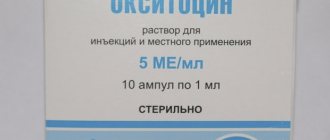“Soft paws - in the paws of a scratchy paw” is a well-known children's riddle about a cat, a beloved pet by many. Sometimes, for some reason, these very scratches (cat's claws) can injure the soft tissues of the paw. This happens when defective ingrown claws grow, which threaten the development of complications in the cat.
What causes a claw to grow into the paw pad?
Nature has thought of everything: to prevent claws from curling and growing into the skin, cats sharpen their claws on their own. Street cats do this in yards: the claws on their front paws are worn down on tree trunks, and the claws on their back paws are worn down while walking. Domestic cats have found another way out: they sharpen their claws on door frames or wallpaper. The owners do not like this situation, so many buy a scratching post - a special device for sharpening claws. A cat's claw should not reach the pad of its paw. There are several reasons why claws can grow to large sizes, bend and grow in:
- the cat moves little;
- sharpens claws poorly;
- hereditary and genetic predisposition.
An adult cat's body may lack vitamins and minerals. This leads to impaired growth of the claws and curvature of the claw plate. Statistically, older cats are more likely to have ingrown claws than young cats. Claws grow into the footpad due to injuries during play or a fall from a height: deformation or change in the length of the claw occurs.
Onychocryptosis
The disease of ingrown toenails is called onychocryptosis. Most often, the nail grows into the nail fold on the outside of the big toe. With onychocryptosis, the finger around the nail plate becomes red, swollen and begins to hurt. If such symptoms do not promptly consult a doctor, then a chronic inflammatory process may develop. Ingrown toenails are a common condition that anyone can experience. In addition, it is not recommended to self-medicate, since improper treatment may result in recurrence of the disease.
Both children and adults suffer from onychocryptosis, but ingrown toenails are more common in young people of working age. Onychocryptosis occurs in 10% of the working population.
How to tell if a cat has an ingrown claw
The owner will independently determine this problem based on the following symptoms :
- the cat refuses outdoor games, runs and jumps less;
- The pet is limping and carefully steps on its sore paw. When walking, an ingrown claw injures soft tissues, creates pain and discomfort;
- the cat pays more attention to the injured leg: licks the paw pad, tries to bite off the claw;
- at the site of ingrowth, the skin swells, turns red and becomes inflamed.
Stages of an ingrown toenail
There are 3 main stages of the disease, which are characterized by the following symptoms:
- Stage 1
: Moderate pain, slight swelling and pressure in the finger. - Stage 2
: Severe swelling, suppuration, throbbing pain, the nail plate thickens and becomes dull, deformation and enlargement of the nail fold are observed. The wound becomes infected and an inflammatory process occurs. - Stage 3
: The disease enters a chronic stage in which proliferation of granulation tissue and deformation of the nail fold and plate are observed. In this case, even bone tissue can become inflamed.
The higher the stage of the disease, the more difficult and lengthy the treatment. Therefore, at the first symptoms you should immediately consult a doctor. Ingrown toenails are especially dangerous for people with diabetes.
How to cure at home
Not many people know about ways to help a pet in this situation. Do not straighten the claw or pull it out manually. This can cause harm. Take special nail clippers. Every owner should have them. Before the procedure, you need to disinfect them. Alcohol, vodka or chlorhexidine will do. Treat the area where the claw is ingrown with an antiseptic. Hold your paw firmly to prevent the cat from twitching. It's good if you have an assistant. He will fix the animal, you will carry out the procedure. Use pliers to cut off the ingrown claw down to the pink part. Blood vessels pass through there and should not be damaged. After trimming, the ingrown claw is pulled out with a sharp movement using tweezers or nippers. The procedure is painful, the animal will struggle. Therefore, it is important to do everything quickly. The cut claw is easily removed. Does not injure neighboring tissues.
Treat the wound with an antiseptic to disinfect and prevent infection. You can use furatsilin or hydrogen peroxide. Lubricate the removal site with antibacterial ointment. Cut off the rest of the claw as much as possible so that it does not touch the paw pad.
The procedure can be carried out at home in the absence of infection and inflammation of the wound. If there is redness and swelling on the soft tissues, contact your veterinarian.
Rehabilitation after removal of an ingrown toenail
The recovery period after excision of an ingrown nail is on average 1 month. During the rehabilitation period it is recommended:
- Ensure the patient remains calm.
- Regular treatment of the nail with antiseptic agents and bandaging.
- Applying medications prescribed by a doctor to the wound.
- Taking painkillers for pain.
- Wearing loose shoes that do not put pressure on the toe.
- Other procedures indicated by the surgeon.
During the recovery period, you must strictly adhere to the doctor's instructions for a successful recovery.
Help from a veterinarian
The veterinary clinic will help in the most severe cases: when the wound becomes infected and the claw grows deep into the paw. The doctor will conduct an examination. Assess the complexity of the case, the degree of claw ingrowth and the need for surgical intervention.
If the claw is not deeply ingrown and there is no inflammation, the veterinarian will remove the claw using special tools. The wound will be treated with an antiseptic to avoid inflammation. If the wound festers, a decision is made to operate. It is performed under local anesthesia. The place of suppuration is opened, the pus and the ingrown claw are removed. The wound is disinfected.
In severe cases, the operation is performed under general anesthesia. A small incision is made at the site where the claw grows in. The claw is cut off and carefully removed. The accumulated pus is cleaned out. The wound is treated with an antiseptic solution. At the end, a sterile bandage is applied.
Complications
With an advanced stage of an ingrown toenail and improper treatment, the following complications may occur:
- Gangrene of the finger is a serious complication in which tissue necrosis occurs. The only way out is complete removal of dead tissue - amputation of the finger.
- Inflammation of the soft tissues of the entire finger with the development of a purulent process, which requires immediate clinical treatment.
- The appearance of tumors requiring surgical removal.
- Purulent inflammation of the bones of the finger, requiring immediate conservative and surgical treatment.
- Other complications delaying the recovery process.
All complications of an ingrown toenail can lead to even more serious consequences if you do not consult a doctor in time. At the first symptoms of onychocryptosis, you should consult a doctor as soon as possible in order to avoid complications and longer treatment. The sooner you start treating an ingrown toenail, the faster and easier this process will be.
Postoperative care
Immediately after removing an ingrown nail, your veterinarian may prescribe antibiotics. They should be taken immediately to avoid the inflammatory process. Additionally, it is recommended to give your pet a complex of minerals and vitamins. In order for injured tissue to quickly recover and heal, immunomodulators are prescribed.
To avoid getting an infection in your foot, wash your floors more often. The room where the pet lives must be clean. Walking and active games are temporarily contraindicated for cats. It is necessary to keep the paw at rest until it has fully recovered.
Diagnosis of onychocryptosis
Diagnosis of ingrown toenail disease may include the following steps:
- The doctor listens to the patient's complaints.
- The surgeon visually examines a finger with an ingrown nail, identifying the underlying disease and associated diseases, such as fungus.
- When the inflammatory process begins, the doctor prescribes tests:
- general analysis to determine the degree of the inflammatory process;
- blood glucose test to determine diabetes mellitus;
- culture of purulent discharge to determine the type of infection.
- The doctor prescribes an x-ray of the foot, which will determine the size and shape of the nail growth, damage to bone structures and the area of suppuration.
After diagnosis, the doctor prescribes treatment, which depends on the stage of the disease.
Prevention methods
To prevent the claw from growing into the paw pad, veterinarians recommend following simple recommendations:
- create conditions for natural grinding of claws. Allow the pet to sharpen its claws to the required height;
- For cats with a genetic predisposition to ingrown and deformed claws, have multiple nail trimming procedures performed at your veterinary clinic. This will straighten the shape of the claw plate and prevent it from growing into the paw;
- If you do not practice walking your cat outside, purchase a high-quality nail clipper. Trim the nails regularly and then carefully file down the edges;
- Inspect your pet's paws as often as possible to identify ingrown claws and other defects. If a problem is detected at an early stage, the claw can be removed without surgery, healing will be faster and easier;
- Protect the animal from injuries to limbs and falls from great heights. This is necessary to prevent deformation and change in the size of the claw.
Remember! If the situation of a claw growing into a paw has already happened, it may happen again. Therefore, carefully monitor your pet.
It is important for owners to know that the most problematic claw is the claw on the fifth toe of the front paws. Anatomically, it is located on the back side above the rest of the cat's fingers. He is actively growing, nothing bothers him. Due to its location, this claw does not reach the surface on which cats grind their claws. Therefore, it is most often the one that grows into soft tissues. The problem of ingrown claws is a common pathology in cats and dogs. It is important to regularly inspect your pet's paws and follow the prevention recommendations above. If you notice an ingrown claw, contact a veterinary clinic as soon as possible. This will help avoid complications. The extraction procedure will be less painful and complicated. No surgery or long recovery period is required.
Trim your nails regularly to protect yourself and your pet from unnecessary problems.
Causes of ingrown toenails
An ingrown toenail can result from:
- Congenital or acquired structural features of the foot and fingers that contribute to the development of onychocryptosis, such as flat feet, deformation of the fingers and others.
- Wearing narrow shoes that press the periungual fold into the nail plate.
- Wearing high-heeled shoes, in which the feet are inclined and the main pressure is on the toes.
- Fungal diseases of nails.
- Wearing a cast or a very tight bandage for a long time.
- Foot injuries.
- Improper trimming of nails, cutting them too deep, cutting off the corners of the nails too much, or leaving a hangnail.
- Diabetes.
- Gout.
Other factors or a combination of them also lead to onychocryptosis. Excess weight, poor posture, untimely and improper foot hygiene, pregnancy, injuries and various diseases can affect the development of an ingrown toenail.
